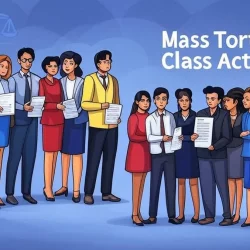Under the DOL's new proposal, employers with ERISA-covered retirement plans would be permitted to use electronic delivery as the default method for furnishing participants with retirement documentation. For participants who prefer a paper copy, they may opt out of their employer's electronic delivery process and receive a physical copy free of charge.
If adopted, the new rules will follow a "notice-and-access" type of electronic delivery. Under this process, participants will receive an e-mail called a "notice of internet" which must include a title and statement, a brief description of the document posted online, the website address where the document is posted, instructions for requesting a free paper copy as well as a statement of the participant's right to opt out of electronic delivery and how to do so, and the administrator's contact information.
The notice of internet must also be written in a way that the average participant would be able to understand it, meaning shorter sentences without legal terminology. Generally, a notice of internet must be sent every time a new document is posted online. However, to prevent "e-mail overload" administrators would be allowed to incorporate other notices into a single notice of internet to send to participants.
Under the DOL's new standards, an administrator would not automatically default a participant into the electronic delivery process without first notifying the participant by paper. In doing so, the participant must also be informed of their right to request and receive paper copies or to opt out of the electronic delivery process altogether.
The proposed delivery system for ERISA notifications resembles the methodology used by the U.S. Securities and Exchange Commission (SEC) to provide investors with disclosure documents. The DOL's proposal is also intended to align with Internal Revenue Service (IRS) rules regarding delivery of retirement disclosures electronically.
The DOL argues that if the proposal is adopted, retirement plan participants will receive continuous-access to retirement documentation, making it convenient and easy for them to access their information at any time. The notice-and-access proposal would also provide participants with notifications, layered or nested information, word/number searching, potentially improved visuals and tutorials, and more.
The DOL is accepting comments on the new proposal through November 22, 2019. The agency will determine if any additional changes are needed once all comments are reviewed.
Background on ERISA Retirement Plans
There are approximately 700,000 private retirement plans that must comply with ERISA requirements. These requirements mean that administrators have to furnish multiple documents per year to participants and beneficiaries using a delivery method that is reasonably calculated to ensure that the recipients get the documents (in-person or first-class mail).
The 2002 Safe Harbor amended the above delivery standards by allowing for electronic delivery; however, there are still concerns above the effectiveness of the 2002 Safe Harbor which some say hinder the broader use of electronic delivery as a default means to deliver retirement documents.
The 2002 Safe Harbor took advantage of developing technology to allow for electronic delivery of certain retirement disclosures. As of now, the 2002 Safe Harbor only applies to two types of retirement plan recipients:
• First, participants who routinely work online; and
• Second, participants who affirmatively consent to receiving documents electronically.
In order to consent, the individual must reasonably demonstrate their ability to access information in an electronic form (e.g., e-mail address, mobile phone number) that will then be used to receive the retirement plan documentation.


